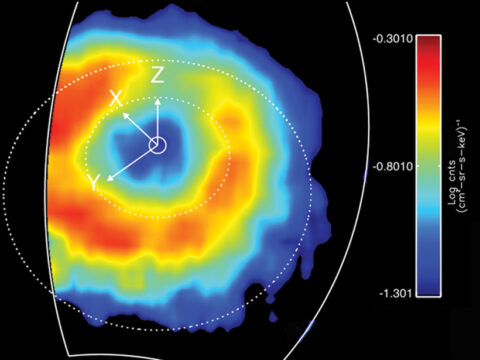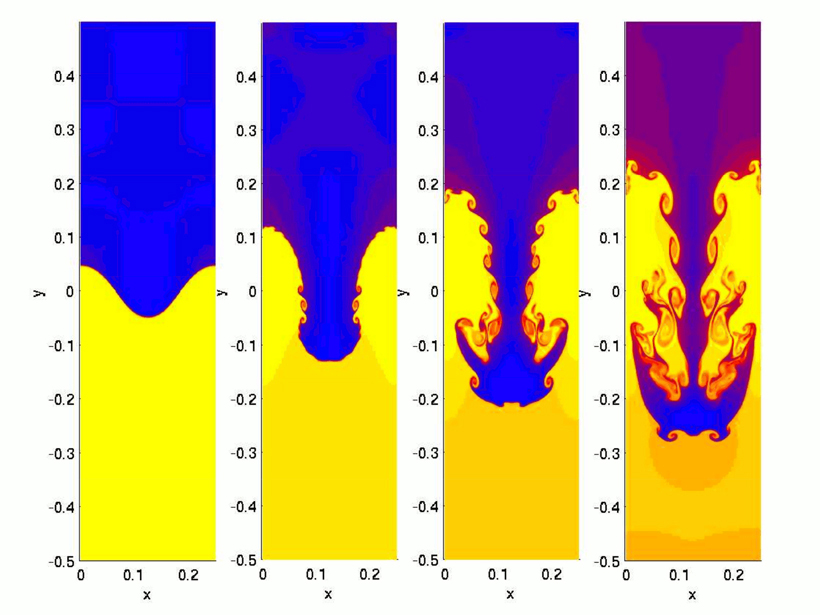Source: Journal of Geophysical Research: Space Physics
Saturn is surrounded by a sphere of plasma that rotates in lockstep with the planet, held rigidly in place by its magnetic field. As a result, centrifugal forces tend to fling dense, heavy plasma parcels into deep space. At the same time, less dense material rushes inward to fill their place, forming fingers of hot plasma that penetrate deep inside Saturn’s magnetic field. This shot of plasma is called an interchange injection, and the exact physics of how it occurs remain unknown.
But NASA’s Cassini probe sometimes flies directly through interchange injections as it orbits Saturn, which allowed Thomsen et al. to measure just how far these injections can travel. They identified 13 interchange events in the mission’s archives from 2005 to 2010 for which observing conditions were suitable and analyzed the data to determine how many of what particles were there, including hydrogen and water.

The water molecules come mostly from Saturn’s moon Enceladus, which has a subterranean ocean that spews out into space through cracks in its icy surface. Enceladus orbits close to Saturn, at a distance just over 4 times greater than the radius of Saturn itself. It steadily fills the inner regions of Saturn’s magnetic field with water ice molecules that eventually migrate out of the system. This means that water concentrations are highest near Enceladus’s orbit, and decrease farther away from Saturn. Thus, by measuring the ratio of water to hydrogen inside the interchange injections, the team could determine where the intruding jets of plasma were from. The drier the plasma was, the farther out it originated.
The team found that interchange injections were carrying plasma from regions as distant as 14 times the radius of Saturn, bringing them inward by over six Saturn radii, or roughly 360,000 kilometers. The team says this could provide clues to what triggers these events. One possibility is a process scientists already know about in Saturn’s magnetic field—the pulses of energy that ripple from the nightside of the magnetic field, where the Sun’s wind of particles blows the field back into a converging tail. But another possibility is that the events arise spontaneously from turbulence in the magnetosphere. (Journal of Geophysical Research: Space Physics, doi:10.1002/2014JA020489, 2014)
—Mark Zastrow, Freelance Writer
Citation: Zastrow, M. (2015), “Fingers” of plasma invade Saturn’s magnetic field, Eos, 96, doi:10.1029/2015EO037417. Published on 15 October 2015.
Text © 2015. The authors. CC BY-NC 3.0
Except where otherwise noted, images are subject to copyright. Any reuse without express permission from the copyright owner is prohibited.

